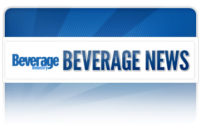Premeditated shopping on the rise
In an effort to save money, today’s recession-shocked shoppers continue to evolve their retail tactics. Pre-planning tasks such as list-making have become more prevalent for budget-minded shoppers, explained Susan Viamari, editor of SymphonyIRI Group’s Times & Trends, during the Chicago-based company’s “Merchandising Trends” webinar in February. With this change in shopping behavior, Viamari noted the importance for consumer packaged goods marketers to influence shoppers at home, in the store and everywhere in between.
SymphonyIRI’s research indicated that three-quarters of consumers make a list before entering retailers, and the same amount make purchasing decisions prior to shopping. Sixty-three percent of consumers plan their items with the help of store circulars, it added. But the traditional sales flier is not their only tool; Viamari noted the emergence of technologies such as mobile coupons, quick-response (QR) codes, text-in promotions, mobile apps and GPS-based services, which shoppers are turning to in order to find the best deals.
Online options continue to gain in popularity with pre-planners, according to a Brick Meets Click (BMC), Barrington, Ill., and Grocery Shopping Network (GSN), Minneapolis, report released last month titled “Connecting with Modern Grocery Shoppers.” According to their research, 80 percent of shoppers find printed circulars helpful, but almost 70 percent report they find online ads beneficial as well.
While visiting a retailer’s website, consumers not only are looking for prices, but 71 percent of shoppers like to see recipes and 58 percent of consumers enjoy having the ability to create an online shopping list, the BMC and GSN report noted. In addition, the report highlighted that 21 percent of consumers have and use grocery shopping apps, and 40 percent are considering downloading such apps.
Many retailers are casting their nets wide in an effort to connect with shoppers. Last month, a Hy-Vee store in Marion, Iowa, promoted a limited-time-only “mystery sale” to its Facebook fan base, Supermarket News reported. The prices for items such as cantaloupe, private-label aspirin and select Pepsi products were announced on Facebook with prices in effect between 4 p.m. and 8 p.m. the same day.
This tactic might play into the fact that 92 percent of global consumers indicate they trust word-of-mouth marketing and recommendations from friends and family above all other forms of advertising, according to New York City-based Nielsen’s “Global Trust in Advertising Survey.” The statistic represents an 18 percent increase since 2007, the research firm noted. The number of consumers who are turning to online consumer reviews also increased, with 70 percent of global consumers saying they trust the platform, according to Nielsen’s survey.
As “liked” and “followed” companies intermingle on social media sites with updates from family, friends and someone you sat next to in algebra class, retailers and product marketers alike are looking to establish a niche within a person’s web of favorite things — and ensure that they make their shopping lists.
Jennifer Zegler
Editor
Looking for a reprint of this article?
From high-res PDFs to custom plaques, order your copy today!






